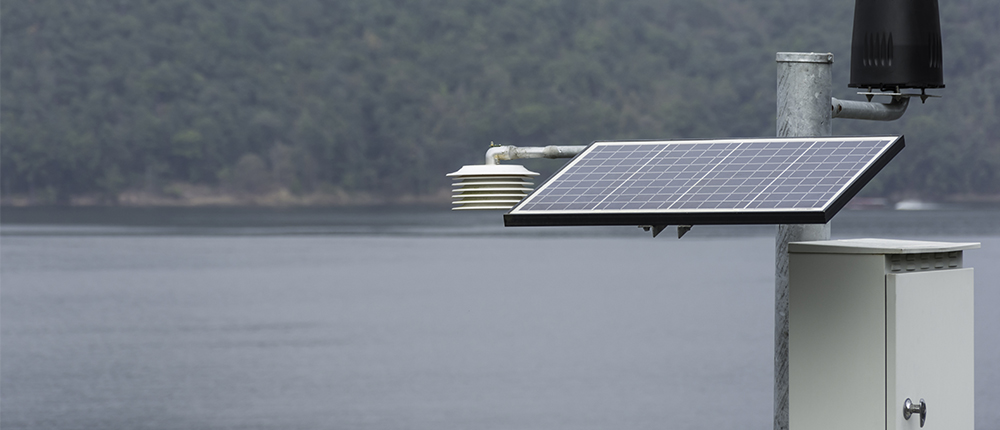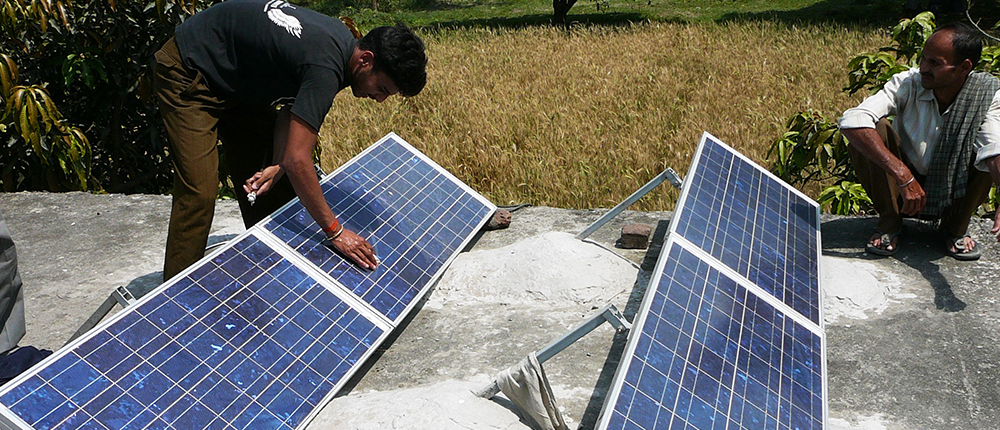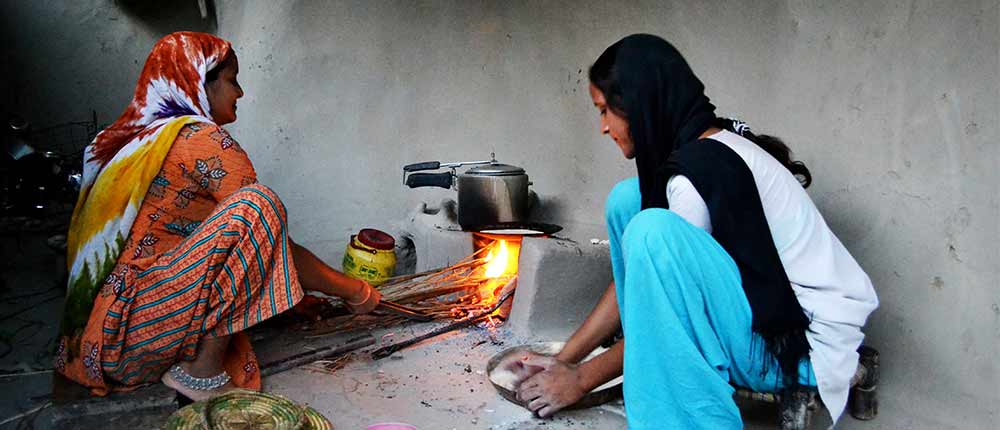Research under the COBENEFITS project suggests that shifting to more renewable energy in power generation would also lead to employment generation, better health, and cleaner air

International discussions and the Intergovernmental Panel on Climate Change (IPCC) special report titled Global Warming of 1.5°C have yielded a common consensus - that Business as Usual (BAU) cannot be sustained in a carbon-constrained world. To that effect, India's Nationally Determined Contributions (NDCs) target an unconditional 33-35 per cent reduction in emission intensity from 2005 levels and a conditional 40 per cent non-fossil fuel based power generation capacity installation by 2030. While this translates to a changing energy portfolio, the scope of climate action is defined by an overarching development prerogative.
Partnering with the Institute for Advance Sustainability Studies (IASS), The Energy and Resources Institute (TERI) and the Council on Energy, Environment and Water (CEEW) have undertaken research that offers grounds for customised policy solutions that maximise the socio-economic ‘co-benefits' of renewable energy deployment.
The co-benefits approach seeks to capture and maximise indirect impacts of climate action. In India, by involving political influencers in the research process, the project ‘Leveraging the Co-benefits of Renewable Energy in India (COBENEFITS)' focuses on the impact renewable energy will have in the areas of energy access, rural development, energy security, clean air and health, business opportunities, and employment generation. It aims to offer policy interventions that capture the impacts of climate change mitigation actions that further Sustainable Development Goals (SDGs).
TERI has hosted a series of COBENEFITS Council meetings with relevant ministry stakeholders. These collaborative deliberations identified gaps and areas of potential intervention in climate change mitigation that align with India's developmental prerogative. In these meetings, points of intervention were narrowed down to three fields on which sector experts were commissioned research opportunities:
- Co-benefits of transitioning to renewable energy in employment generation (CEEW)
- Co-benefits of transitioning to renewable energy in energy access (TERI)
- Co-benefits of transitioning to renewable energy in air pollution and health (TERI)
These deliberations were followed by workshops that discussed preliminary findings from each study with sectoral experts from legislative and research backgrounds. These workshops aimed to get political stakeholders on board and ensure academic rigour.
Findings
The CEEW and Skill Council for Green Jobs (SCGJ), conducted a study titled ‘A long-term assessment of net employment in power sector in India'. It captured co-benefits in terms of net employment that would be generated by shifting to renewables in the power sector.
The study aimed to define the simultaneous evolution of jobs, skills and education required to achieve the shift and to quantify jobs created annually till 2035, then for time slices of 2040 and 2050. These results were based on three scenarios respectively: i) Reference (outlining BAU), ii) NDC (where projections are made assuming that India will deliver on all its renewable commitments outlined in current policies and schemes), and iii) Ambition (which makes projections based on the idea that India goes over and above its current commitments to tackle climate change).
Some of the key findings to emerge were that rooftop solar and small hydro projects will create the maximum number of jobs for every megawatt (MW) of capacity installed – approximately 25 and 14 jobs/MW respectively. The study also notes higher employment in renewable energy in INDCs and Ambition scenarios to the order of 25 per cent higher employment in Ambition scenario compared to Reference scenario. It also notes that net employment in coal mining activities decreases in Ambition scenario.

The objective of TERI's study on energy access was to assess the feasibility of decentralised renewable energy systems to provide an enhanced, affordable, and reliable electricity services to rural households. It also aimed to examine the business case for scaling up solar mini-grids in India.
Among other results, the study found that reliability of power supply was a major issue in the grid connected villages. While minigrids were found to provide more reliable supply, the households were paying much more (~ Rs. 37/kWh) for basic electricity services such as lighting and mobile charging, compared to the grid-connected households. The study noted that at the currently deployed scale (10-300 kW) mini grids are unviable due to their high tariffs and low capacity which makes them incapable of providing services at a par with the grid. Therefore, the study advocates the need for scaling up mini-grids to medium scale (500 kW to ~1 MW) that can cover clusters of villages and service the residential loads – basic and aspirational support public services as well as productive loads in villages.
Other co-benefits of these mini-grids would be local employment creation for the management of the systems. The study also found that while scaling up mini-grids makes them more cost effective and significantly lowers their tariffs, the reduced tariffs are found to be higher than grid electricity tariffs. This is because rural grid consumers are significantly cross-subsidised by other consumer categories (such as industrial, commercial) and direct subsidy by the state governments' design. This mechanism does not currently exist in the mini-grid sector. Therefore, the study makes a case for extending the benefit of cross-subsidies to mini grid consumers as well in order to bring tariffs at par with those of the grid. The study posits that mini-grids be treated as natural extensions of the grid, thereby addressing issues of grid stability and reliability as well as enabling mini-grid developers to sell surplus power to the grid.
TERI's air pollution and health study aimed to ascertain the regional disparity and quantum of emissions from energy sector; prediction of particulate matter (PM) concentrations, assessing impacts of PM concentrations on human health, and associated savings from moving to renewables.

The study created models along scenarios delineated above and painted a harsh picture, noting that deaths attributable to ambient PM 2.5 in 2015 were the highest in residential biomass consumption (42 per cent), meaning that the usage of firewood or dung cakes to cook in households was a significant cause of deaths related to respiratory issues. Results indicated that these deaths would reduce to 20 per cent in 2050 if there is increased LPG uptake.
While emissions in domestic, industrial, energy, and transport sectors would continue to increase in the BAU scenario between 2016 and 2021, these would decline in the INDC and Ambitious scenarios by 16 and 22 per cent respectively, compared to the BAU scenario. Further, TERI's study found that by the year 2020, mortality attributable to thermal power plants would reach to 36,174 under the BAU scenario. It estimates that by 2020, BAU will translate to a loss of 0.39 million healthy years of life, which worsens by 69 per cent to reach up to a loss of 0.66 million healthy years in 2050. These figures reduce by 10 per cent in the Ambition scenario. In economic terms, this loss totals up to Rs. 110 billion in 2020, and Rs. 838 billion by 2050. The study also noted that PM 2.5 emissions will be concentrated in the Indo-Gangetic plain and the Himalayan regions.
Key takeaways
Discussions at the workshops highlighted the need to frame a national narrative using the three studies, possibly along renewable energy technology verticals. A national narrative would encapsulate socio-economic development due to climate action and make a case for raising ambitions in framing climate policies. That coal will remain relevant in India's near future was discussed and deliberated upon. While coal labour intensity (jobs related to coal directly or indirectly, per 1,000 tonne of production) historically has been declining due to efficiency gains in the sector, it remains one of the most significant employers in India. In addition, the problem of electricity access has morphed into that of reliable electricity supply due to numerous reasons such as the financial health of power distribution companies (discoms) and their practice of end-user targeting, among others.
The loss of life and livelihoods and the resultant economic cost of air pollution also reiterated the case for greater and urgent climate action. The COBENEFITS team believes that there are synergies between existing policies, such as Make in India and Skill India, and a shift to renewables, which can be capitalised upon. The team also believes that the studies offer multiple points of policy intervention that make the case for capacity building and awareness creation to aid the country's development agenda.
Way forward
As 2019 progresses, the COBENEFITS project intends to deepen the engagement of stakeholders related to each of its studies. These studies intend to offer stakeholder trainings, organise more council meetings to discuss results and policy recommendations stemming from the studies, identify points of intervention, and hold deliberations to acknowledge limitations in mainstreaming the co-benefits approach in policy making. These activities are envisioned to extend the outreach of the project, which ultimately will include publications synthesising results and stakeholder inputs into a national narrative.
